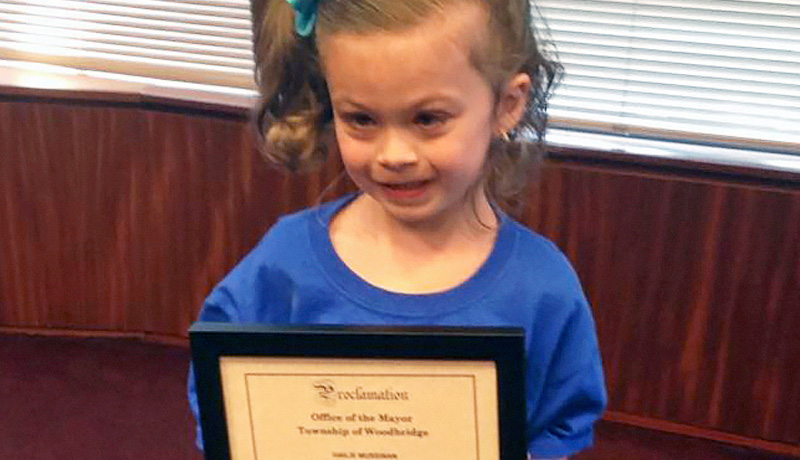
09 Aug Premature Baby With Hydrocephalus Now Sings Like an Angel
Brandon Flores was born prematurely, at 29 weeks, only weighing two pounds, 12 ounces. Doctors forewarned his mother, Sandra that many complications were possible and one was certain.
Brandon had hydrocephalus, which means water on the brain, which is not unusual given the circumstances. Luckily, it was treatable.
Water on the Brain in Premature Babies
In babies, the causes of hydrocephalus can be congenital – ie. present at birth, arising from abnormal development or infection while in the womb – or acquired, if it develops during or after delivery. Signs of fluid building on the brain typically include swelling or a bulging area in the head. Read more about hydrocephalus here.
Premature babies can develop acquired hydrocephalus, which arises from bleeding into the brain’s ventricles (called intraventricular hemorrhage). Intraventricular hemorrhage occurs in 20 to 25 percent of very low birth weight preterm neonates.
What happens is the blood causes scarring of the chorionic villa. Consequently, the cerebrospinal fluid (or CSF, the fluid that surrounds the brain and spinal cord) cannot be properly reabsorbed, so it accumulates in the brain.
The doctors cautioned that if the condition did not resolve on its own, Brandon would eventually need a shunt. Alas, it did not resolve and he was implanted with a shunt at five months old.
By 2015, Brandon Flores was a thriving 11-year-old boy. The sixth-grader from Clifton, New Jersey still had the original shunt, which was exceptional.
Surviving Hydrocephalus Shunts in Babies
According to the Hydrocephalus Foundation, an estimated 50 percent of shunts in the pediatric population fail within two years of placement due to infection, malfunction or other complications. It’s also plausible that babies will outgrow their shunts. Because of these issues, repeated neurosurgical checkups are imperative and often required.
Brandon came to Dr. Arno Fried of Advanced Neurosurgery Associates (ANA) as a baby with an infection to the shunt. Dr. Fried managed to clear up the infection without having to remove the shunt. He has been responsible for Brandon’s follow-up care and maintenance ever since to confirm that the shunt is still working properly.
Dr. Fried explains that it is a “misconception that a child with hydrocephalus will have one surgery after another.” However, vigilance is required. Shunt problems can reveal themselves in everything from vomiting to a child falling in school to just not acting right. Being proactive is key in shunt maintenance.
“If there is any concern, we tell the parents to call us.” He claims, “The mother is always right. If she feels something is just off, 99 percent of the time she is right. It’s the shunt.”
Dr. Fried has developed a caring doctor-patient relationship with the Flores family during his annual checkups with Brandon. Sandra Flores gushes, “Dr. Fried has been awesome. Whenever we make an appointment, his staff works with me to fit it into our schedule. He has a wonderful manner with Brandon. He is always on top of things. He is always there for us if we have any questions.”
In addition to his thorough care, Sandra says Dr. Fried also has an extraordinary bedside manner, seeing the individual as a person, not just a patient. In fact, at a recent checkup, Brandon, an accomplished performer, sang for Dr. Fried and the ANA staff in their office. “Their hair stood up,” says his proud mother.
Life After Hydrocephalus as a Premature Baby
The former two-pound infant now stands 5’2” and weighs 130 pounds with a solid set of pipes. Last year, Brandon starred as Gaston in his school’s production of Beauty in the Beast. He also won his school’s version of “Idol,” beating out all the older seventh and eighth-graders.
His mother testifies to his qualities. “He’s special. He’s polite and sweet with a beautiful heart. He sings like an angel.” Brandon displayed his sensitivity by singing to his mother’s friend during her fatal breast cancer illness.
The distinguished honor student knows all about his shunt, and for those who can sometimes see the tubing through the skin in his neck, Brandon is happy to explain. “That’s the tube that goes from my brain to my stomach,” he tells them.
The boy (who wants to be a singing scientist when he grows up) still enjoys looking at his baby pictures. “This was you,” his mother tells him about the baby with the distended stomach, half-shaved hair and visible wires coming from his brain. “I was so cute,” he says.
Concludes Sandra of the boy who can see the adorable baby rather than a sick child. “He finds beauty in everything, even in things not beautiful.”







